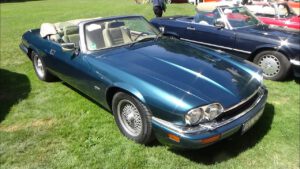Discover the fascinating journey of the Ford Model T, the iconic ‘Tin Lizzy,’ that revolutionized automotive history. Explore its remarkable legacy now!
Ford Model T (“Tin Lizzy”) – A Revolutionary Legacy
The Ford Model T, affectionately known as the “Tin Lizzy,” holds an unparalleled legacy in automotive history. Introduced in 1908, it revolutionized mass production, rolling out over 15 million units by 1927. Berlin saw its first assembly line in 1926, long after the Model T had already etched its mark on American history. Sporting a robust 2.9-liter four-cylinder engine with 20 horsepower, it was engineered for minimal maintenance, lacking a conventional gearbox and various pumps and filters. Its iconic black nitro paint, chosen for its speedy drying, graced the majority produced between 1915 and 1925, sometimes up to an astounding 9000 units per day.
The Industrial & Social Revolution by Ford Model T
Henry Ford’s brainchild, the Model T, was more than just a car; it was the catalyst for an industrial and social revolution. With the advent of assembly line production in 1913, production surged to a staggering 1000 vehicles daily by 1914. The zenith came in 1923, with 2 million “Tin Lizzies” rolling off the lines in the USA. From 1908 to 1927, over 15 million Model Ts found their way to eager owners, a record only eclipsed by the Volkswagen Beetle in 1972.
Innovative Engineering of the Model T
The Model T was an engineering marvel. Its engine and gearbox were ingeniously integrated into a single block, creating a seamless driving experience. The planetary gearbox allowed for near-automatic shifting, setting it apart from contemporaries. Resilient vanadium steel fortified its construction, a testament to Henry Ford’s commitment to durability. To expedite production, the iconic black paint, which dried the fastest, was standard from 1914 to 1926. This efficiency allowed for increased production, with the Model T claiming half of all American cars by 1918.
Built for American Roads and Beyond
Designed for rugged American terrains, the Model T boasted high ground clearance and robust transverse leaf springs. While it lacked front axle brakes and shock absorbers, its powerful engine and effortless gear shifting compensated for these shortcomings. Impressively, it maintained a frugal fuel consumption of 9.5 to 11 liters per 100 km. Its adaptability to the challenging roads of its time solidified its place in automotive history. a It was a rather comfortable vehicle, which had only simple design features and did not derive its high reputation from racing.
The Engine – Simple Genius of the “Tin Lizzy”
Beyond its pioneering production methods, the Model T’s engine stood as a testament to Ford’s ingenuity. Engineered for durability and efficiency, it propelled millions of Americans into the world of motoring. Henry Ford and chief engineer C. Harold Wills prioritized simplicity in design, ensuring reliability for the rough American terrain. Innovations like the removable cylinder head cover and thermosiphon cooling system showcased their forward-thinking approach. Though initially lacking a water pump, many owners later opted for retrofits, a testament to the enduring legacy of the “Tin Lizzy.”







